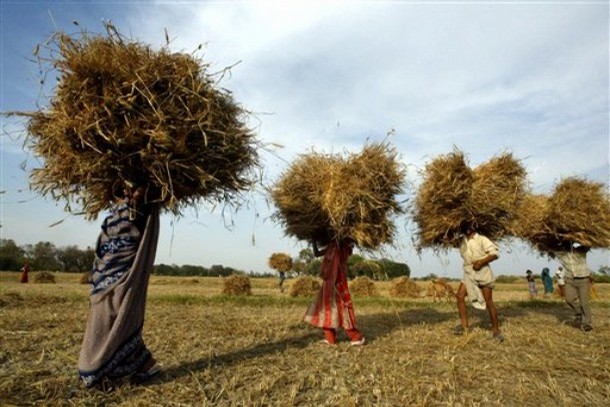As India’s 70th year of Independence begins, widespread progress is evident, but in rural India, where 833 million Indians (70%) live, people are consuming fewer nutrients than are required to stay healthy, according to a 2012 National Nutrition Monitoring Bureau (NNMB) survey.
On an average, compared to 1975-1979, a rural Indian now consumes 550 fewer calories and 13 gm protein, 5 mg iron, 250 mg calcium and about 500 mg vitamin A lesser.
Children below the age of three are consuming, on an average, 80 ml of milk per day instead of the 300 ml they require. These data explain, in part, why in the same survey, 35% of rural men and women were found to be undernourished, and 42% of children were underweight
In poorer areas, the situation is worse, as a survey conducted by Aajeevika Bureau, a not-for profit organisation, in 2014, across four panchayats in South Rajasthan indicated.
Almost half the 500 mothers surveyed had not eaten pulses the previous day, a third had not eaten vegetable and almost none had eaten any fruit, egg or meat. As a result, half of all mothers and their children under three in these areas were undernourished.
The implications of hunger for India’s future
These data have implications for Prime Minister Narendra Modi’s Make-in-India and Skill-India programmes for economic growth.
“The consequences of child undernutrition for morbidity and mortality are enormous–and there is, in addition, an appreciable impact of undernutrition on productivity so that a failure to invest in combating nutrition reduces potential economic growth,” this 2015 World Bank report noted.
Despite higher economic growth, malnutrition levels are almost twice as high in South Asia as compared to Sub Saharan Africa, V Ramalingasami and Urban Johnson wrote in a seminal 1997 paper, titled Malnutrition: An Asian Enigma. While the lower status of women in South Asia was offered as an explanation, almost two decades later, rural Indians just do not seem to have enough food to eat.
India’s economy has been growing consistently since the early 1990s. The country has survived the recessions that started in USA in 2008 and affected large parts of the world. What is not as well known is that over the same period, more and more people in rural India were eating less and less.
While growth of gross domestic product (GDP) is estimated every six months using different methods, nutrition levels are estimated once every 10 years, leading to data gaps that IndiaSpend reported in July 2016.
Nutrition monitoring has been defined by the World Health Organization as the measurement of the changes in nutrition status of a population or a specific group of individuals over time.
The NNMB was set up in the year 1972 to monitor the status of nutrition in rural India across 10 states. The Bureau conducted nutrition surveys in rural areas in these 10 states over three time periods: 1975-79; 1996-97 and 2011-2012. These surveys provide us a temporal understanding of food intake among rural India over the past four decades.
Read it here, Feature image courtesy yourstory



























